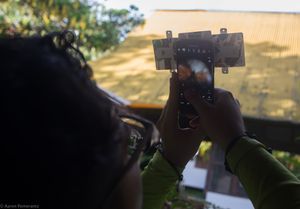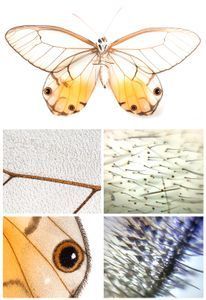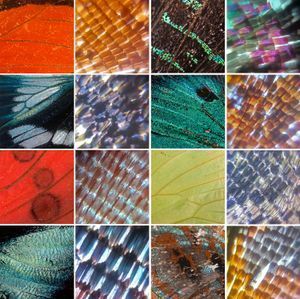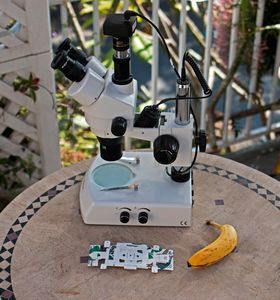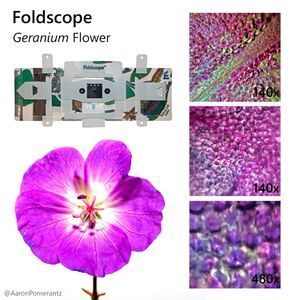Arthropod Soil Biodiversity and Foldscope-DSLR Camera Hack
 Feb 28, 2016 • 7:51 PM UTC
Feb 28, 2016 • 7:51 PM UTC United States
United States 140x Magnification
140x Magnification Microorganisms
Microorganisms
Aaron Pomerantz
Learn about the author...
10posts
3comments
5locations

It has been a while since my last post on butterfly wing scales – since then I’ve been thinking up some directions to apply the Foldscope to a more in-depth study on biodiversity in the Amazon rainforest. When I initially played with the Foldscope in the jungle , I had the idea to take one scoop of soil to see what I could find and look at under the portable origami microscope. To my surprise, one scoop of soil had more organisms crawling around than I could keep track of!

Soil represents one of the most important reservoirs of biodiversity, yet the organisms that make up soil fauna remain largely unnoticed by both professionals and lay people. In particular many arthropods make up this diversity, such as mites, beetles, ants, and springtails – these small organisms are vital to soil and plant health.

A common method for arthropod soil extraction is the Berlese funnel trap. Soil/leaf litter can be placed at the top and hit with a light source (this can be a heat lamp or left in the sun). Since many arthropods living in the soil negatively respond to light/heat, they move down the funnel and can be collected at the base, often in a vial of alcohol where they are preserved. You can construct simple Berlese funnels out of old soda bottles or you can order from online sites such as BioQuip .
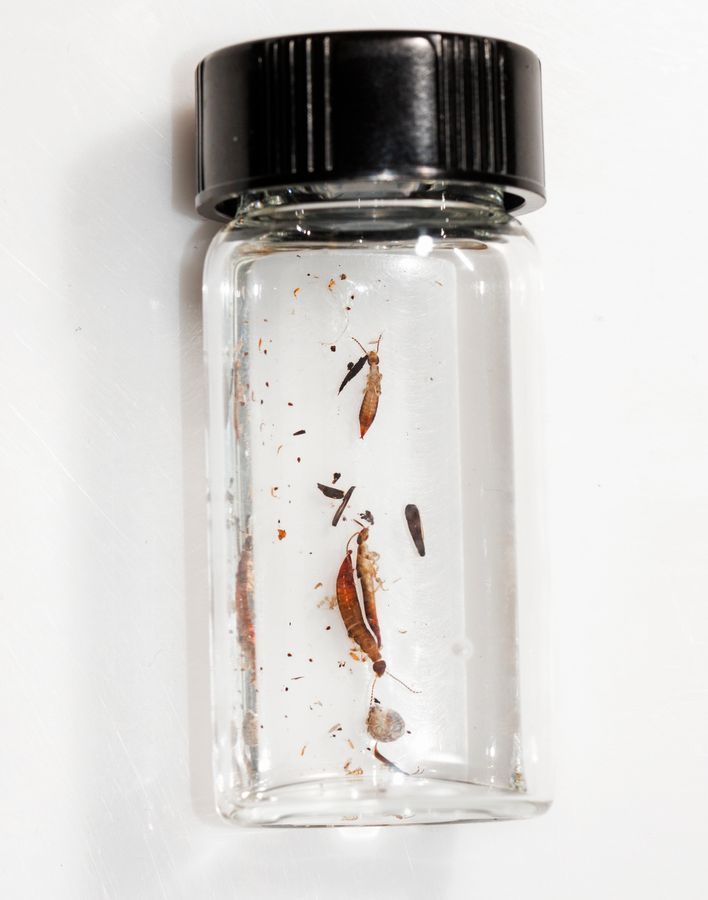
Here is what one soil/leaf-litter sample yielded in Los Angeles, CA. You can clearly see larger arthopods like the earwigs and pill bug, but notice all the tiny “dots”. Those are all arthropods as well, including tiny mites and springtails. It would not be surprising if many of these micro-arthropods are undescribed species. Below are some shots taken with the Foldscope at 140X from samples in Los Angeles as well as Peru –



These are different species of mites belonging to the suborder Oribatida. Oribatid mites are one of the most numerous groups of arthropods in the soil – there are about 7000 described species but the fauna of much of the tropics is unknown. Mites can serve as important bioindicators for soil health.


An insect egg found in the leaf litter. I’d like to attempt to get some time-lapses of development like I’ve seen from Dr. Prakash and other Foldscope members.

A small springtail (Collembola) from Peru, these arthropods are extremely abundant in the soil.

A larger springtail from Los Angeles, CA. This species has many more setae (hairs) which could be an indication of adaption to a drier climate, as the hairs can keep in moisture and prevent desiccation.

A live organism found in my soil sample in Peru. Perhaps a beetle larvae? Interesting how we can see the muscles in the head contract to make the mandibles move.
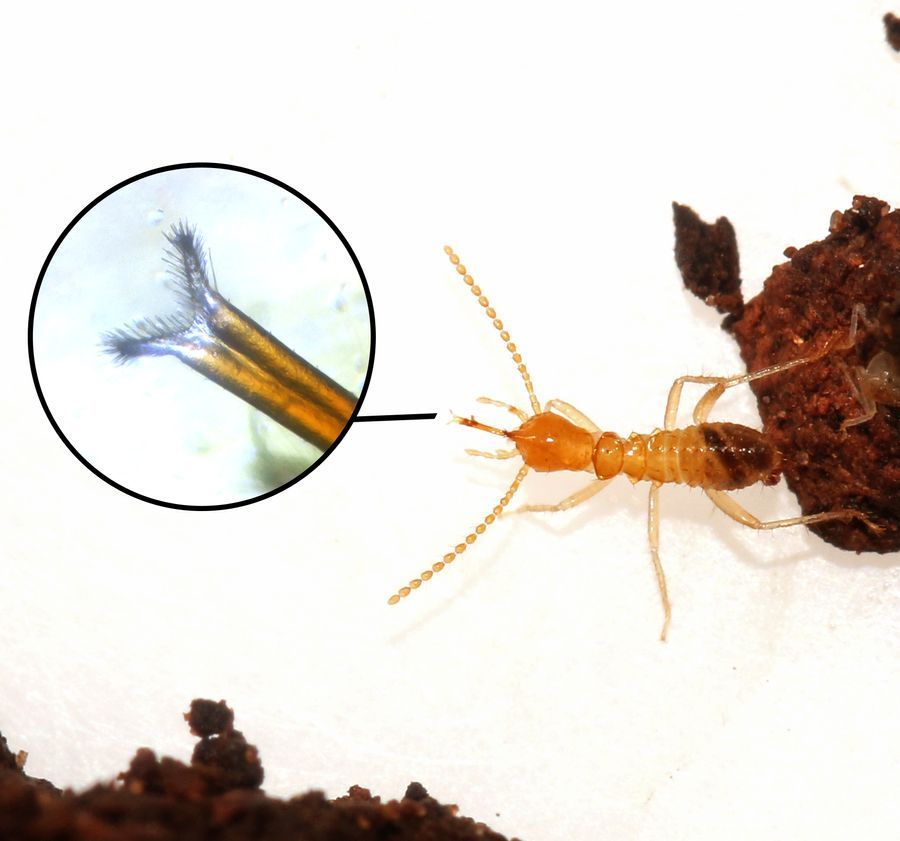
Many termite species are also present in soil in the Neotropics. This is a minor soldier belonging to a group called rhinotermes – with the Foldscope I zoomed in on a structure called the brush tip, which can secrete noxious chemicals used to defend the termite colony.

I recently had the opportunity to visit the Foldscope lab which was a blast. So much exciting research is going on and the people I met are beyond incredible. During my short stay I also worked with some of the team members on some new Foldscope “hacks”. Since I frequently use a DSLR camera in the jungle, I was curious if we could adapt the camera lens to the Foldscope in a way similar to how a cell phone can be connected.

I was very excited when it worked! By drilling a hole into the lens cap and adding the magnetic adapter, we were able to essentially turn my camera into a powerful microscope. These are butterfly wing scales shot with the Foldscope 140 X lens connected to my 100mm macro Canon lens. I will definitely be playing around with this more.
View this post on Instagram
A post shared by Aaron Pomerantz (@nextgenscientist)
A big thanks to the Foldscope team for hosting me during a brief visit to Stanford University – it was an amazing opportunity to pick such bright minds and think up new exciting project directions. I will be starting a PhD program at the University of California Berkeley this Fall and hope to continue working with ground-breaking technology like the Foldscope. As I move along with Foldscoping soil arthropod diversity, I’d be interested to hear from the community to see if we can create a global surveillance of our tiny soil inhabitants.
-Aaron
View this post on Instagram
A post shared by Aaron Pomerantz (@nextgenscientist)
A big thanks to the Foldscope team for hosting me during a brief visit to Stanford University – it was an amazing opportunity to pick such bright minds and think up new exciting project directions. I will be starting a PhD program at the University of California Berkeley this Fall and hope to continue working with ground-breaking technology like the Foldscope. As I move along with Foldscoping soil arthropod diversity, I’d be interested to hear from the community to see if we can create a global surveillance of our tiny soil inhabitants.
-Aaron
Sign in to commentNobody has commented yet... Share your thoughts with the author and start the discussion!

 0 Applause
0 Applause 0 Comments
0 Comments